Overview of Prasat Kravan
Prasat Kravan is not as spectacular as other Khmer monuments, but well worth a stop for a visit when driving along the Grand Circuit the Small Circuit tours, both of them lead to Prasat Kravan. It is located about 3 km east of Angkor Wat. The modern name "Kravan" or "Kravanh", pronounced "krauvan" or "krouvan", means cardamom. It refers to a cardamon tree that stood here. The original Sanskrit name of the sanctuary is unknown.
Prasat Kravan was a private temple. This means it was not founded by a king, but by a dignitary or priest. From the tenth century onwards, kings granted this privilege to Brahmins or other court officials. Prasat Kravan was consecrated in 921 by a nobleman called Mahidharavarman, who was a high official at the court of Harshavarman I (ca. 910-925).
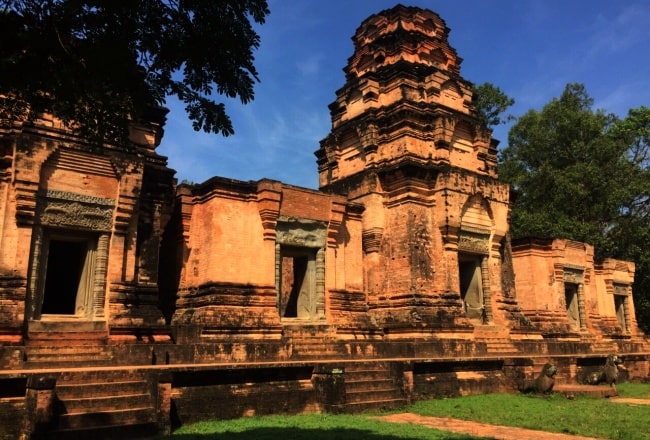
Harshavarman was the less powerful son of the very first king residing in Angkor, Yashovarman I. Harshavarman I's cousin was a local commander in Koh Ker who became more powerful than the kings of Angkor and defeated them and became their successor, but he continued to reside in Koh Ker.
It was during this period of Angkor's weakness that Prasat Kravan was built. It takes up elements of the style of Koh Ker, particularly those dynamics in sculptural illustrations the style of Koh Ker is famous for.
Prasat Kravan was cleaned from vegetation by French archaeologists in the 1930s. The two towers with superstructures were restored in the 1960s. Modern replacement bricks are labeled CA ("Conservation Angkor"). New research and restoration works began recently and are still in progress. They are supported by the G.A.C.P. (German Apsara Conservation Project).
The temple is oriented to the east and surrounded by a small moat. Its exterior is striking for its classical lines and symmetry. The central and the south tower have superstructures which take advantage of false perspective by simple means of diminishing tiers.
The sanctuary's interiors are remarkable for the large bas-relief depictions of Vishnu and Lakshmi that have been carved into the walls of reddish brick, connected by a vegetable compound. This type of sculptured artwork is rather common in Cham temples, but rare in known Khmer monuments.
Below is the glimpse of Prasat Kravan in 360o viewing:
Location
Prasat Kravan is located on the road from Angkor Wat to Srah Srang. It’s about 1.5 km from the Apsara Road and around 5km from Angkor Wat.
You can check the location of Prasat Kravan in the below Google Maps for your reference:
Getting There
If Prasat Kravan is your first stop when entering the park, then arrive to Angkor Archaeological Park by the Apsara Road. Turn right and then after around 1.5km you’ll see Prasat Kravan on your right.
Many guests will visit Prasat Kravan on the small or grand circuit tours. If this is the case, then it will usually be the last temple of the day before you go back to your hotel. Most tours will go around the temples in a clockwise fashion. If you decide to do the temples in reverse order, then it will be the first temple on your tour.
Best time to visit
There are two very good times to visit Prasat Kravan, the early morning and the late afternoon. In the morning the main facades are lighted up in the sun, in the afternoon you can see the five towers mirrored in the surrounding moat, but it is usually dry between February and May. You need an Angkor ticket for access to Prasat Kravan.
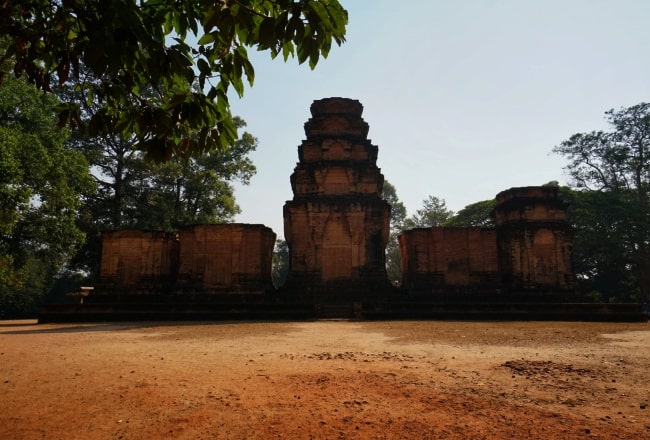
Prasat Kravan Tours
Prasat Kravan is often featured on both the Small Angkor Wat Circuit and the Grand Angkor Circuit tours. It’s not as popular as temples such as Bayon or Ta Prohm, but it’s definitely worth a visit.
You wouldn’t usually come to the park just to visit Prasat Kravan because even if you take photos of everything here, you’ll be done in an hour or so. You might want to combine Prasat Kravan with other temples in the vicinity such as Prasat Bat Chum and Banteay Kdei.
Accommodation
There are no hotels located inside the Angkor Archaeological Park and most guests will stay at a hotel in Siem Reap town. Siem Reap has become a large tourist town and there are hundreds of hotels to choose from. You will find everything from small and cheap guest houses to large luxury resorts.
Here is our Siem Reap Travel Guide
Why Visit Prasat Kravan?
You should visit Prasat Kravan because it offers a unique architectural experience which is rarely found in Khmer temples. The bas-reliefs are also still in pretty good condition.
Although Prasat Kravan is fairly popular with guests, it isn’t the most popular. This means that you can still get some great photos without lots of other tourists getting in the shots. The symmetrical towers also make for a good photo opportunity.
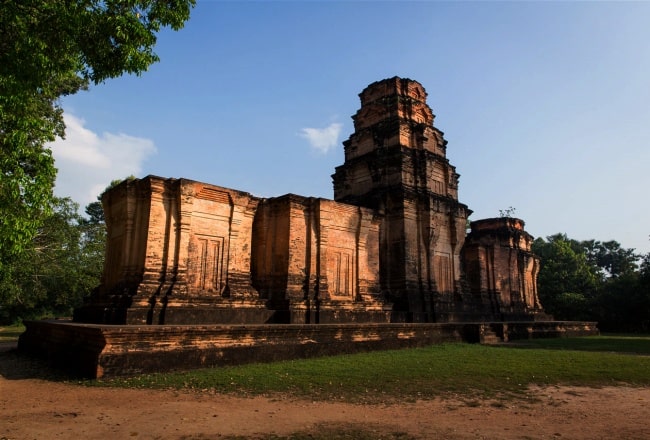
The five sanctuary towers
The monument is enclosed by a moat, which is crossed by a small causeway in the Western section of the temple grounds. East of the towers is a large cruciform terrace, which might have been where an entrance gate was which was probably built out of wood or other perishable material since nothing of it remains today.
In front of each of the sanctuary towers is a stairway that was guarded by lion statues, some of which still remain. The entrance door of the central tower contains sculpted Dvarapala guardian figures set in niches. An inscription on the doorpost of the 3½ meter wide central tower mentions that a statue of Vishnu was dedicated here in the year 921. The central sanctuary is still topped with its original four tiers, the Southern sanctuary has two of its tiers remaining, the other three have none.
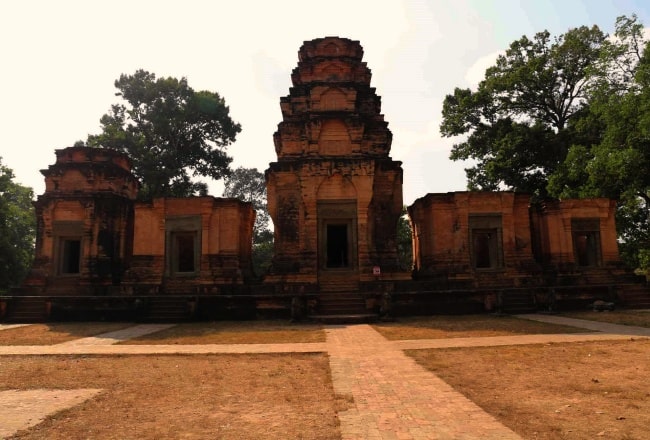
Bas reliefs of the central sanctuary
The interior of the central sanctuary contains three bas reliefs of Vishnu, sculpted directly into the brick wall. One of the reliefs depicts a storey from the Bhagavata Purana, an ancient Hindu tale originating from India. The scene shows “the three giant steps of Vishnu”.
In the tale, Vishnu comes to earth in the shape of the dwarf Vamana. Vishnu requests Bali, King of the Asura demons, to be given a plot of land he could cover with three footsteps. As soon as the King agreed to the request, Vishnu reveals his real size and powers and with three steps covers the entire universe.
Other reliefs show an eight armed Vishnu surrounded by a large number of worshipers in 6 lines, and Vishnu on his mount Garuda. The North tower shows sculptures of Lakshmi, Vishnu’s consort. This sanctuary contained a pedestal and was possibly dedicated to Lakshmi.
Other Bas-Reliefs
There are also two bas-reliefs of Lakshmi in the north tower. Lakshmi is the consort of Vishnu. In both of these depictions, the goddess is surrounded by her followers. In one, she is holding Vishnu’s discus and Shiva’s trident. In the other, she is holding lotuses.
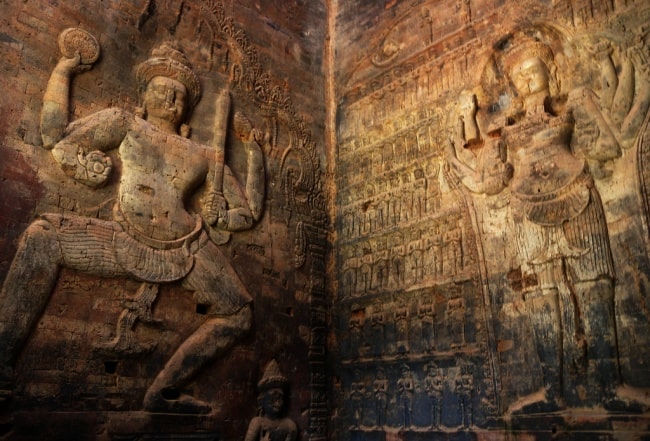
Layout and Design of Prasat Kravan
Kravan is an unusual arrangement of five towers in a row on one terrace. They are built of brick; the lintels and columns are of sandstone.
Central Tower
This is the only tower with recessed tiers intact, which are visible on the interior. The columns are octagonal, with four bare sides and sandstone rings. This tower enclosed a linga on a pedestal. An inscription on the pillars gives the date 921 for the erection of the statue of Visnu on the interior Decoration (exterior): The east side of the Central Tower is sculpted with male guardians in shallow niches and chevrons and framed figures on the pilasters.
A frieze of small heads adorns the lintel. Decoration (interior): The main decoration of this tower, on the left, depicts Visnu taking three steps to span the universe and to assure the gods of the possession of the world. It comprises a standing image of Visnu (with four arms) carrying his attributes-a disc, a ball, a conch and a club.
One of his feet rests on a pedestal; nearby a person is meditating and another one is walking on a lotus held by a woman on a background of undulating lines representing the waves of the ocean.
On the right, Visnu (with eight arms) is framed with six registers of people meditating and a giant lizard. This sculpture on brick was formerly coated with stucco and was probably highlighted with colours.
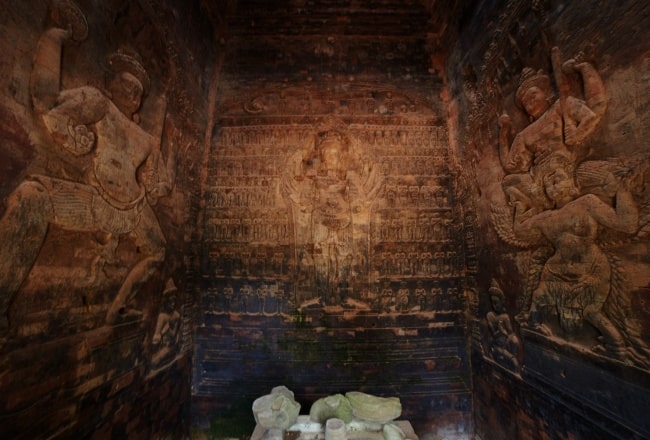
North Tower
The north tower was dedicated to the five aspects of the goddess Shri Lakshmi. Vishnu's consort is depicted on three walls inside the northern tower, and on the lintel. Her fifth aspect was represented by a statue, now missing. The wall on the left shows a four-armed Lakshmi, strangely holding attributes indicating Shiva's instead of Vishnu's consort.
Two attendants kneel down at her side. The two-armed Lakshmi sculpture on the east wall is less well preserved, here Lakshmi is accompanied by four adorants. There are only few parts remaining from the reliefs on the northern wall.
South Tower
The walls on the interior have no decoration A lintel on the exterior with Vishnu on his mount, the Garuda, is skillfully modeled.
History of Prasat Kravan
Prasat Kravan was built in 921 AD (10th century) by high-ranking officials under the reign of Harshavarman I or Ishanavarman II. The temple was originally dedicated to Vishnu. Other than this, not much is known about the temple or what it was used for.
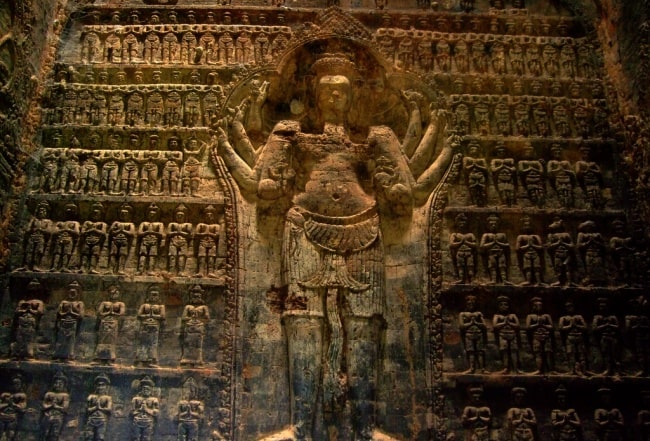
Like most of the temples in the region, it is thought that Prasat Kravan was abandoned at some point in the 16th century.
In the 1930s, the site was cleaned by two French explorers – Georges Trouve and Henri Marchal. Work on the site was interrupted by the Japanese invasion during World War 2. In the 1960s, the site was restored by Bernard Philippe Groslier and his team. Some new bricks were added this time. These new bricks are easily identifiable as they were marked with the acronym “CA” which stood for “Conservation Angkor”.



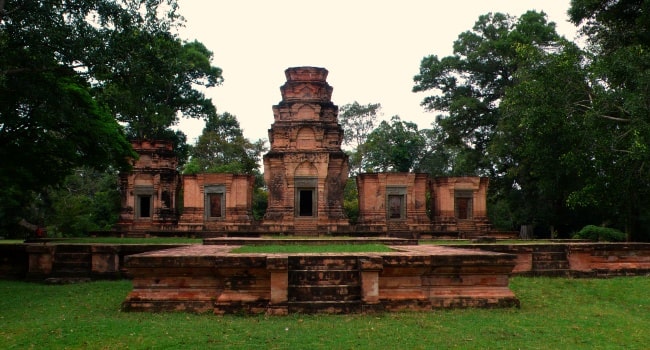

 17/01/2026
17/01/2026





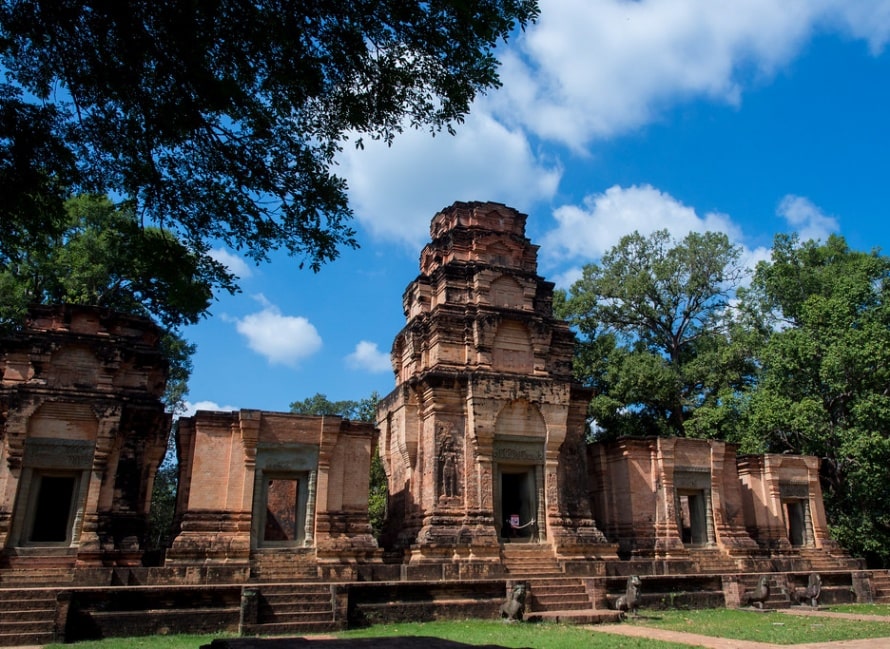
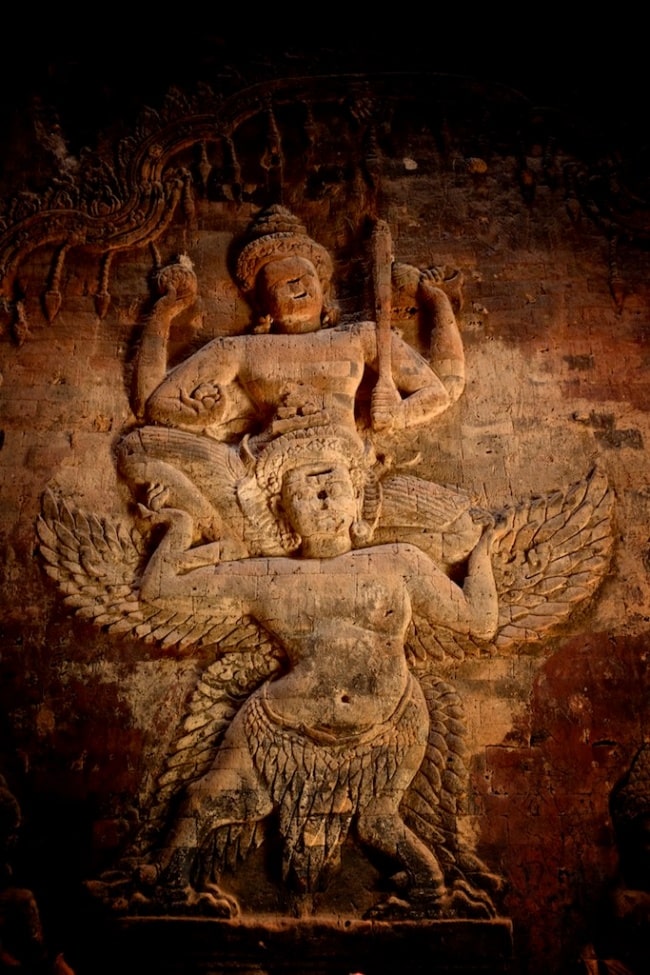
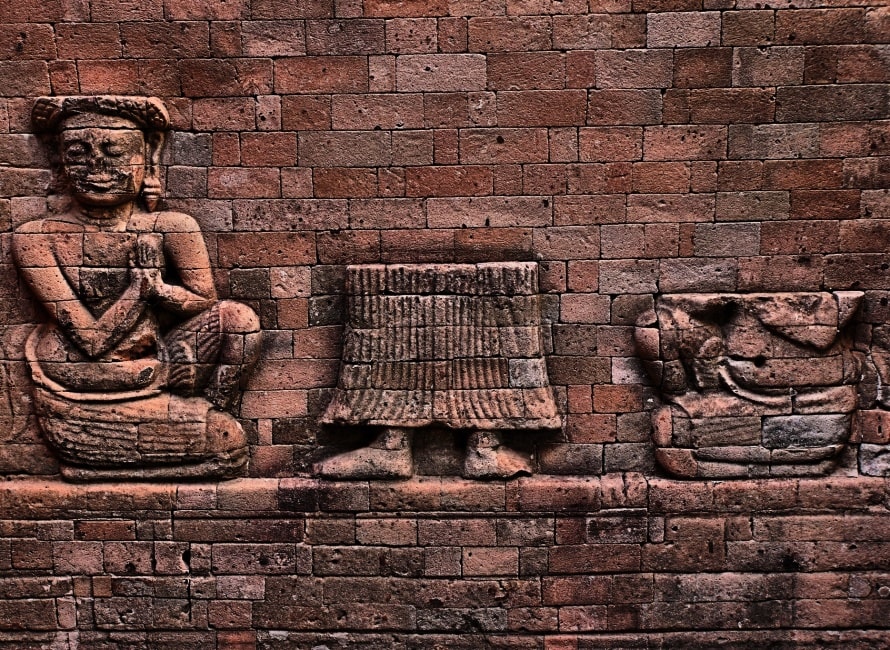
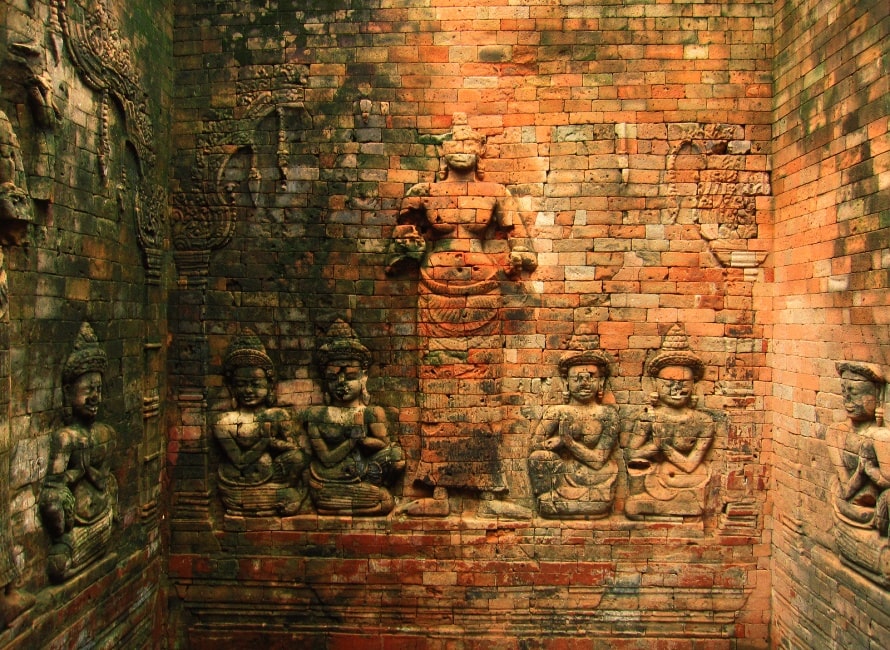
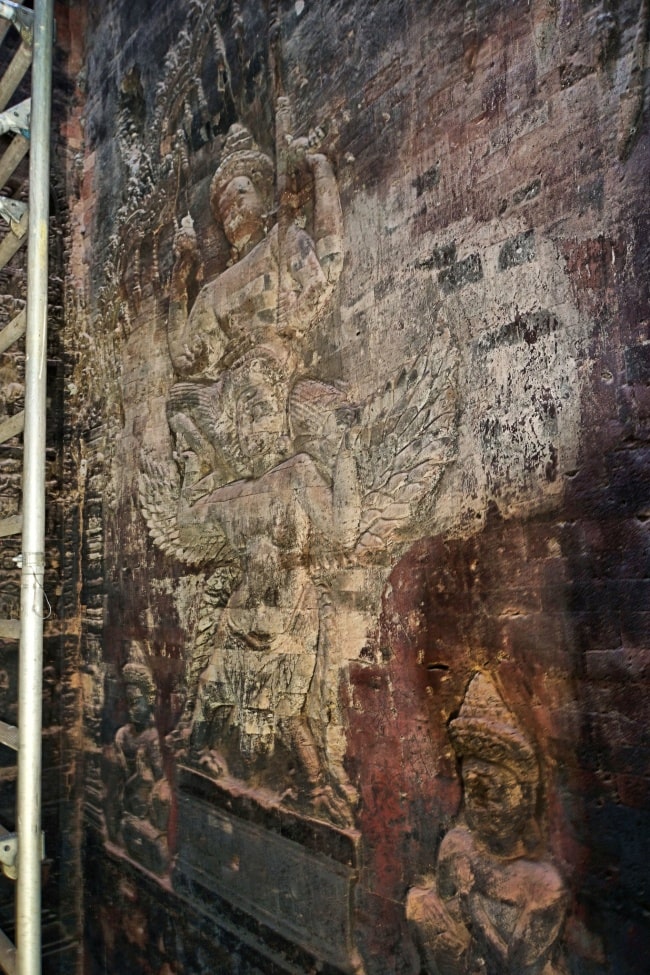
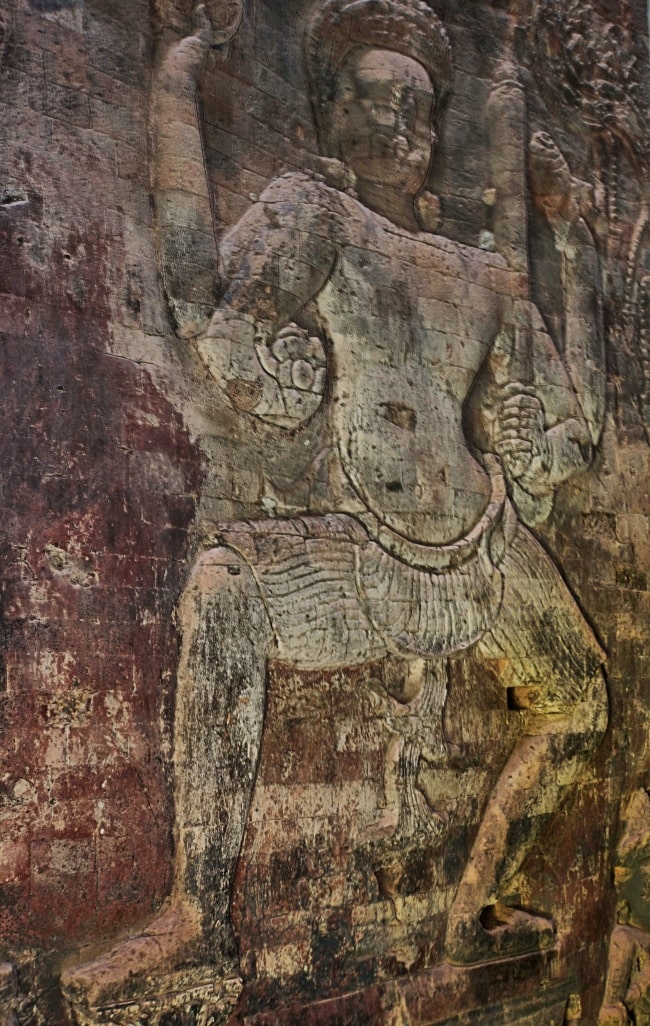
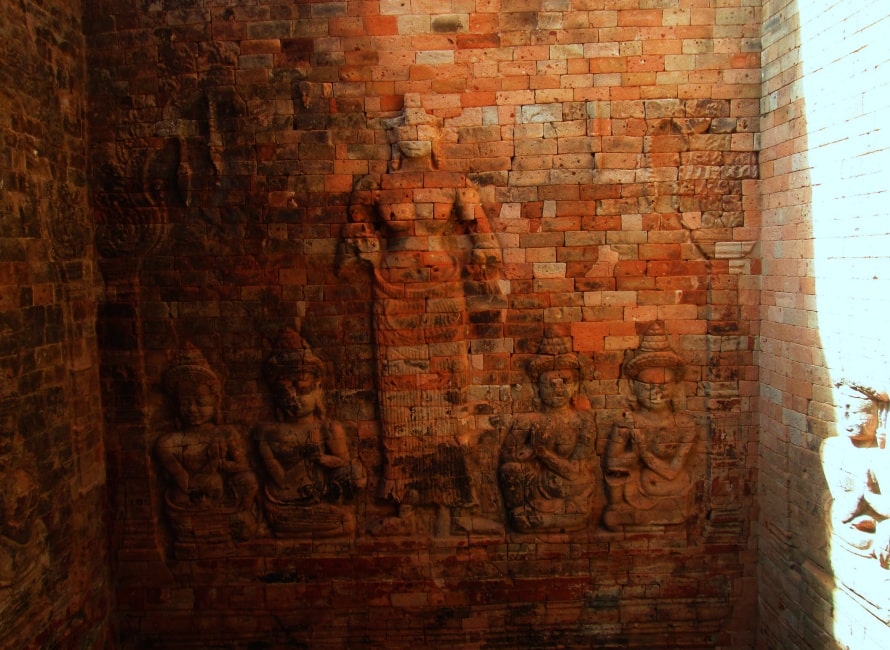
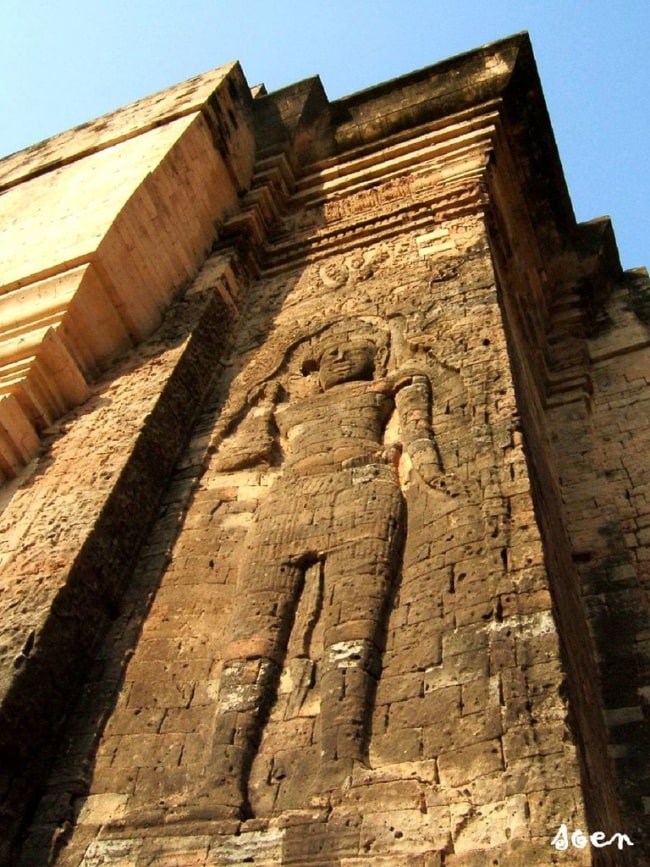





















Jolie LIEMMy name is Jolie, I am a Vietnamese girl growing up in the countryside of Hai Duong, northern Vietnam. Since a little girl, I was always dreaming of exploring the far-away lands, the unseen beauty spots of the world. My dream has been growing bigger and bigger day after day, and I do not miss a chance to make it real. After graduating from the univesity of language in Hanoi, I started the exploration with a travel agency and learning more about travel, especially responsible travel. I love experiencing the different cultures of the different lands and sharing my dream with the whole world. Hope that you love it too!